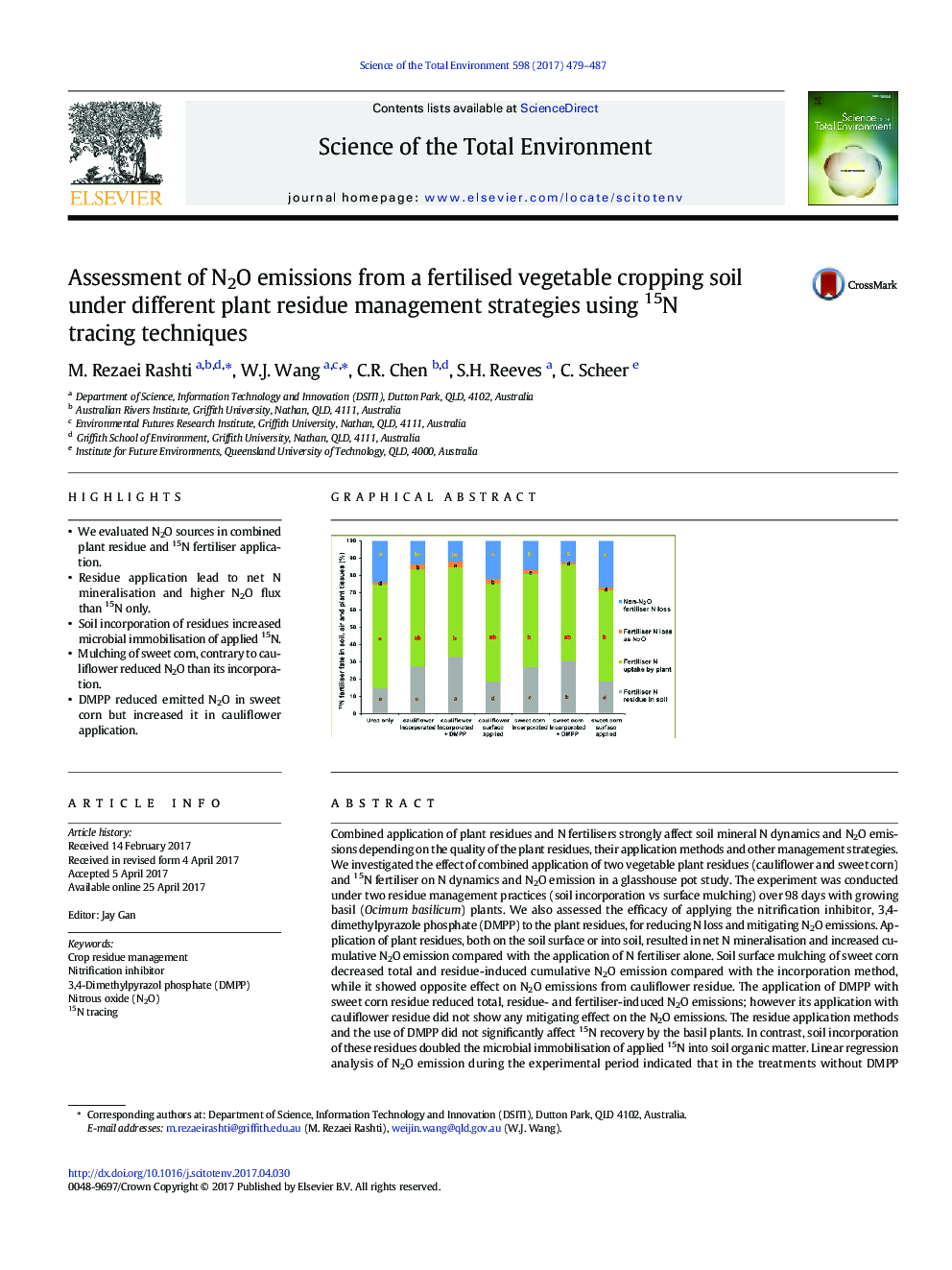| کد مقاله | کد نشریه | سال انتشار | مقاله انگلیسی | نسخه تمام متن |
|---|---|---|---|---|
| 5750961 | 1619699 | 2017 | 9 صفحه PDF | دانلود رایگان |

- We evaluated N2O sources in combined plant residue and 15N fertiliser application.
- Residue application lead to net N mineralisation and higher N2O flux than 15N only.
- Soil incorporation of residues increased microbial immobilisation of applied 15N.
- Mulching of sweet corn, contrary to cauliflower reduced N2O than its incorporation.
- DMPP reduced emitted N2O in sweet corn but increased it in cauliflower application.
Combined application of plant residues and N fertilisers strongly affect soil mineral N dynamics and N2O emissions depending on the quality of the plant residues, their application methods and other management strategies. We investigated the effect of combined application of two vegetable plant residues (cauliflower and sweet corn) and 15N fertiliser on N dynamics and N2O emission in a glasshouse pot study. The experiment was conducted under two residue management practices (soil incorporation vs surface mulching) over 98Â days with growing basil (Ocimum basilicum) plants. We also assessed the efficacy of applying the nitrification inhibitor, 3,4-dimethylpyrazole phosphate (DMPP) to the plant residues, for reducing N loss and mitigating N2O emissions. Application of plant residues, both on the soil surface or into soil, resulted in net N mineralisation and increased cumulative N2O emission compared with the application of N fertiliser alone. Soil surface mulching of sweet corn decreased total and residue-induced cumulative N2O emission compared with the incorporation method, while it showed opposite effect on N2O emissions from cauliflower residue. The application of DMPP with sweet corn residue reduced total, residue- and fertiliser-induced N2O emissions; however its application with cauliflower residue did not show any mitigating effect on the N2O emissions. The residue application methods and the use of DMPP did not significantly affect 15N recovery by the basil plants. In contrast, soil incorporation of these residues doubled the microbial immobilisation of applied 15N into soil organic matter. Linear regression analysis of N2O emission during the experimental period indicated that in the treatments without DMPP application, soil NO3â-N concentration was the most important factor in controlling the magnitude of N2O emissions, while the application of DMPP changed the dominant regulating factor from NO3â-N to NH4+-N concentration.
80
Journal: Science of The Total Environment - Volume 598, 15 November 2017, Pages 479-487